Did you know that Matt Cutts released a video explaining that social signals do not impact search engine result rankings?
For a long time, every SEO behaved as if they did. If this is true — that social signals don’t affect search rankings — what do we do now?
We’re making the case that social is the new SEO. But we need to explain the new social/SEO territory that we’re in, specifically in the wake of Cutts’ announcement.
So, what has changed with social media and SEO?
Let us give you a brief history of Google’s conflicted stance on social signals.
Google’s stance on social media
First, in May 2010, Cutts stated that the algorithm does not use social signals as a factor in search results.
Then, in December of 2010, Cutts revealed that the algorithm does use social signals as a factor in search results.
Finally, in January of 2014, Cutts informed us that the algorithm does not use social signals as a factor in search results.
This agonizing back-and-forth has caused some confusion in the search community. For the last several years, we’ve been operating under the assumption, stated by Cutts himself, that social signals were an algorithmic rank factor.
Our metrics seemed to back it up. The higher our social following, the better our sites seemed to perform in the SERPs. Evidence suggests that the so-called “social signals” were a helpful SEO feature.
And now, they aren’t a factor?
If that is the case, then thousands of SEOs and social media managers have been barking up the wrong tree. We’ve been throwing millions of dollars and thousands of hours into pumping up our numbers of followers, fans, plusses, retweets, and likes in order to improve our SEO.
Now, apparently, that doesn’t work for SEO. Social signals do not impact SEO.
To quote Cutts’ exact words:
Facebook and Twitter pages are treated like any other pages in our web index so if something occurs on Twitter or occurs on Facebook and we’re able to crawl it, then we can return that in our search results.
But as far as doing special specific work to sort of say “you have this many followers on Twitter or this many likes on Facebook”, to the best of our knowledge we don’t currently have any signals like that in our web search ranking algorithms.
Let’s just assume that he’s right.
What should we do about it?
There are several things that we should do in light of this information. First, let us tell you what not to do.
Don’t neglect social!
The whole point of this article is that social is important. It’s the new SEO! It’s one of the most important ways that you can spend your time, efforts, and marketing dollars.
So, maybe these “signals” we loved so much aren’t working. But so what? Social is still a valuable channel for promotion, content, distribution, virality, and sharing. Social is still a crucial aspect for search even if it doesn’t register as one of Google’s many algorithmic ranking factors.
Stay on top of social. More on that later. For now, please remember — don’t neglect social!
Small businesses benefit the most from social media
A Social Media Marketing Industry Report came up with some interesting findings in terms of who benefited the most from social media.
According to their findings, 90% of respondents agreed social media was important to their businesses.
The interesting thing is that 67% of self-employed individuals and 66% of small business owners were more likely to strongly agree with this statement.
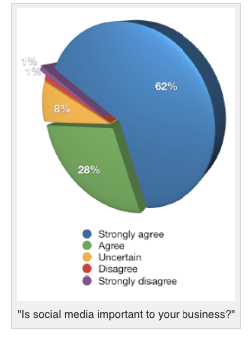
In terms of the specific advantages, 88% of respondents said the top benefit was increased exposure for their businesses.
Second, at 72%, was increased traffic/subscribers.
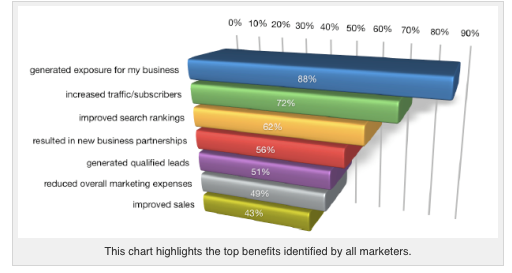
With roughly two-thirds of all small business owners claiming social media was important to their businesses, it’s clear that a well run campaign can have a significant impact.
You also have to take into account the possibility for going viral and seeing massive growth in an extremely short period of time.
If you really understand your audience and know how to connect with them on social media, you can not only gain exposure but also earn your audience’s loyalty and bring repeat business.
So in theory, a no-name startup can experience wide scale exposure overnight and get a flood of traffic along with off the chart sales.
Potent social media strategies
We love social media because it gives small businesses the opportunity to convey their identities and build highly personalized relationships with their audiences.
You can showcase your swagger and let consumers know why your company is worth doing business with.
It may sound a little cheesy, but we think the most important part of finding success on social media is to be yourself.
We, for example, are building our strategy with the specific goal of reaching OUR customers and not worrying about the masses.
This coincides with Seth Godin’s concept of building a tribe (a community) around your brand.
As the old saying goes, “Try to please everyone, and you’ll end up pleasing no one.”
Dollar Shave Club is a great example of a brand that embraces being itself.
Their off-kilter, slightly smart-ass marketing messages are unforgettable and definitely appeal to a certain segment of the population.
Saying things like, “Our blades are f**king great” is ballsy. But it’s hard to deny that this attitude has been a key contributor to their success.

Another integral element of a well run social media campaign is to be constantly engaging your audience.
Whether it’s retweeting epic content relevant to your niche, responding to comments on your Facebook page, inviting others to connect on LinkedIn, or asking questions to ignite digital discussions, it’s important that you’re interacting.
In other words, be on the offense.
The great thing about social is that it can actually be used as an outlet for handling certain aspects of customer service.
People love giving their feedback via social channels, which gives you an opportunity to strengthen relationships and quickly fix escalating situations when the feedback happens to be negative.
It’s also essential that you’re using the right networks.
Each social network has its own demographic and appeals to a different segment of the population. You want to make sure you’re spending your time on the networks your core audience is using.
For example, if your target audience is primarily female, Pinterest would be one of your best bets because 81% of Pinterest users are female.
Some other strategies include the following:
- Use a consistent tone and style to strengthen your brand identity
- Be authentic
- Provide genuinely useful and valuable content
- Use plenty of images (people respond favorably to visuals)
- Maintain a consistent presence (e.g., don’t go MIA for months on end)
- Curate content as well as create your own
- Use analytics to measure your results and make the necessary adjustments
- Consider using tools like HootSuite and Buffer to automate some aspects of your marketing (e.g., scheduling posts ahead of time)
Change your idea of “SEO” to include social search engines
SEO is nearly synonymous with Google optimization. When we provide SEO advice, ranking tips, and coaching on SEO, most of the discussion centers around what Google likes, what it does, how it crawls, and why it behaves the way it does.
However, we need to understand that search engine optimization includes the search that happens on social media search engines.
Google isn’t the only search engine out there. Yes, there is Bing, Yahoo, Ask, and AOL. But the amount of search that these engines manage is minuscule compared to Google.
Look at a typical example of traffic generation:
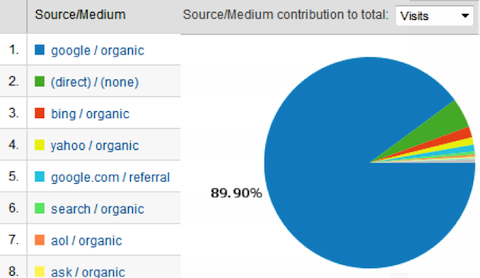
This pie graph demonstrates that Google is the dominant source of search engine traffic.
There is a surprising reality lurking behind this graph that we don’t often think about.
Social is a search engine too.
Social referrals don’t register in the graph above because the social searchers have the company’s social page, not the company’s website (with analytics tracking), as their destination.
Nonetheless, visitors who find the company on its social platforms are searching, accessing, and interacting with the company in a very real way.
Social is the new SEO because social networks themselves function as powerful and widely-used search engines in their own right.
Here are the big social search engines and their search capabilities.
YouTube
YouTube is the second largest search engine in the world, second only to Google. Yes, Google bought YouTube in 2006, but YouTube is still a separate site with a separate search algorithm. Every second of every day, 1,140 searches are performed on YouTube.
There is an enormous amount of content that is indexed on YouTube. With 100 hours of video being uploaded every minute, with 50% of Internet users accessing YouTube, with six billion hours of video viewed every month, and with one billion unique monthly visitors, YouTube is a force to be reckoned with.
And it’s a social force.
YouTube is a video sharing site. Get that: sharing. It’s social.
If you’re not using YouTube, then you’re neglecting a valuable source of search traffic. Even if that traffic doesn’t end up on your homepage, it’s still enhancing your social presence.
This could elicit a flood of conversions, brand awareness, and social growth that is outside the realm of conventional Google SEO optimization.
Facebook has a highly-developed search engine. Its purpose is vastly different from Google’s because it is indexing the content and settings of personal and business identities.
Facebook’s people search feature allows you to tweak your search settings to find individuals that you may know:
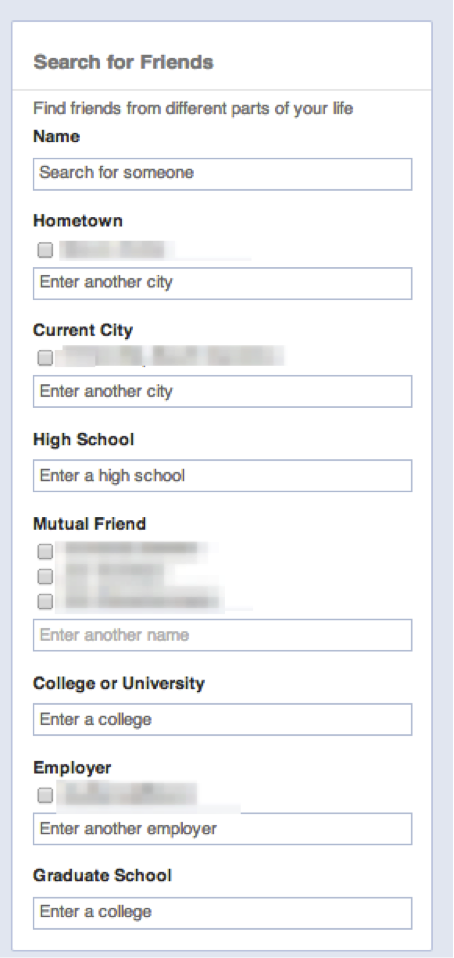
This is a critical source of searched information because it taps directly into people’s pursuit of human relationships:
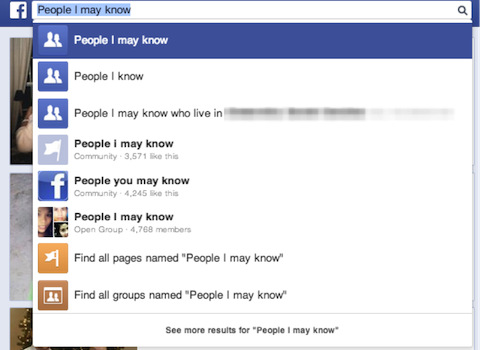
Specific filter sets allow us to curate the exact results that we want:
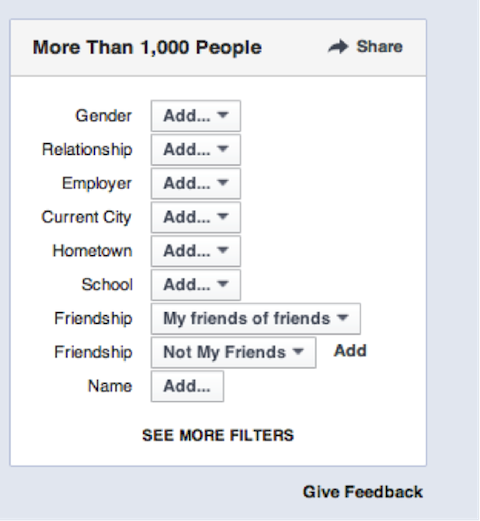
Facebook’s search bar allows instant search on any topic, organization, individual, or idea. It elicits thousands of searches daily and a deluge of targeted leads for companies and businesses who know how to work it.
And all of this has no connection to Google whatsoever.
Twitter is a search engine too. A big one.
Statisticbrain reports that as of January 1, 2014, Twitter’s search engine manages 2.1 billion queries daily. This shouldn’t come as a surprise. Search engine experts have been watching Twitter search metrics for a few years.
Here’s a sample query for “google algorithm.” See what comes up?

The first result is promoted. We can discount that one. In the second result, though, we see that there is a “top news story” by Barry Schwartz, posted on Search Engine Roundtable. This is a hot topic.
This kind of search appeals to us because we can get up-to-the minute results. We can even refine our search with a set of filters:
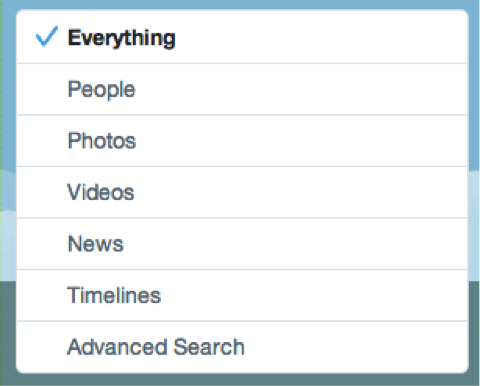
If that’s not good enough, we can use Twitter’s Advanced Search functionality.
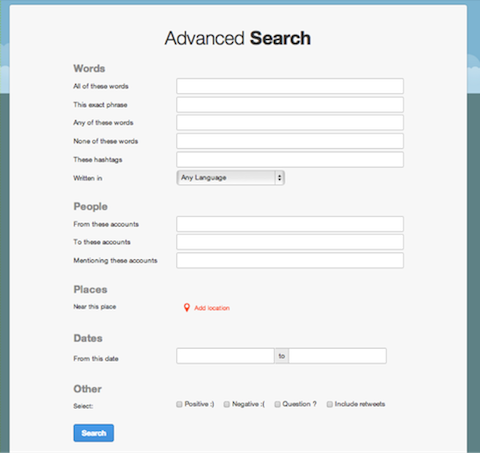
This is a level of search in a source that is largely unreturned in Google’s results.
But it’s still search engine optimization, just on a different search engine. And at a rate of 2.1 billion searches daily, there is an incredible amount of traffic that can be gained.
Obviously, Twitter search is delivering Twitter-only results. In order to rank on these Twitter search results, you’ve got to:
- Tweet about the hot topics.
- Tweet using hashtags.
- Tweet regularly.
Google crawls and indexes some social pages
So, maybe the number of your followers doesn’t matter to the algorithm. But still, the content on social pages is indexed. Your social pages matter to Google.
Here’s what Cutts said in his video:
Facebook and Twitter pages are treated like any other pages in our web index so if something occurs on Twitter or occurs on Facebook and we’re able to crawl it, then we can return that in our search results.
This is somewhat vague. The phrase “if something occurs” doesn’t exactly inform you what that occurrence is. Nor does it tell you what kind of pages on social networks are indexed.
Based on this response, we interpret Cutts’ words in the following way. We think what he’s saying is, “We only crawl some social pages, and we only return some of those results.”
From conducting studies of our own, we have found that Google does crawl and return personal Facebook pages, Twitter accounts, and LinkedIn pages for individuals.
In the case of Facebook, a person’s account will show up in the SERPs only if the accessibility permissions have been adjusted to allow public viewing of certain elements on the page.
Our studies have also shown that there is an upside to having social pages for a business as far as Google SERPs are concerned. Companies with robust and optimized social accounts can and will gain greater search benefits from their social media accounts in Google SERPs.
For example, the World Wildlife Fund has its Facebook account listed on the first page of Google for the queries “World Wildlife Fund” and “Wildlife Fund.”
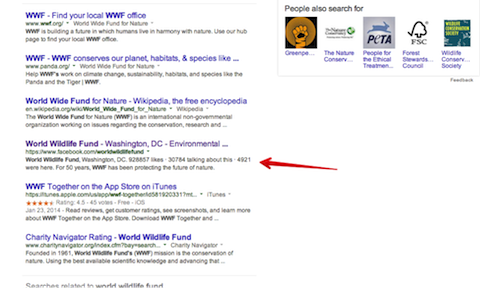
If you Google “Quicksprout,” you will see its Facebook and Twitter accounts in the second and third positions of Google’s SERP.
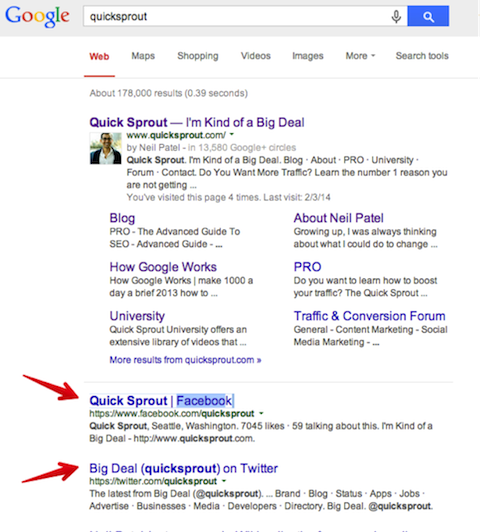
This is a different type of SEO altogether.
Conclusion
Cutts’ video on the role of social media in SEO suggests that future search results may provide tighter integration with social results. It’s evident that the web is an intensely social place.
Maybe the size of your social empire is irrelevant. But your social presence is very relevant when it comes to search.
No longer can we view the algorithm as a sterile and lifeless entity to be gamed, tricked, and cajoled by our clever SEO tricks. We must now realize the enormous impact of the social web.
The web is comprised not merely of bits and bytes but of people, organizations, groups, causes, ideas, and human energy. We’ve observed that with Apple’s popularization of speech search (e.g., Siri) and Google’s Hummingbird update, even the style and syntax of search has a human, or conversational, element.
As we move forward in the new SEO era of social, the takeaway is this — stay active on your social networks. Pay attention to them, curate them, improve them, enhance them, and remain plugged into this valuable resource.
